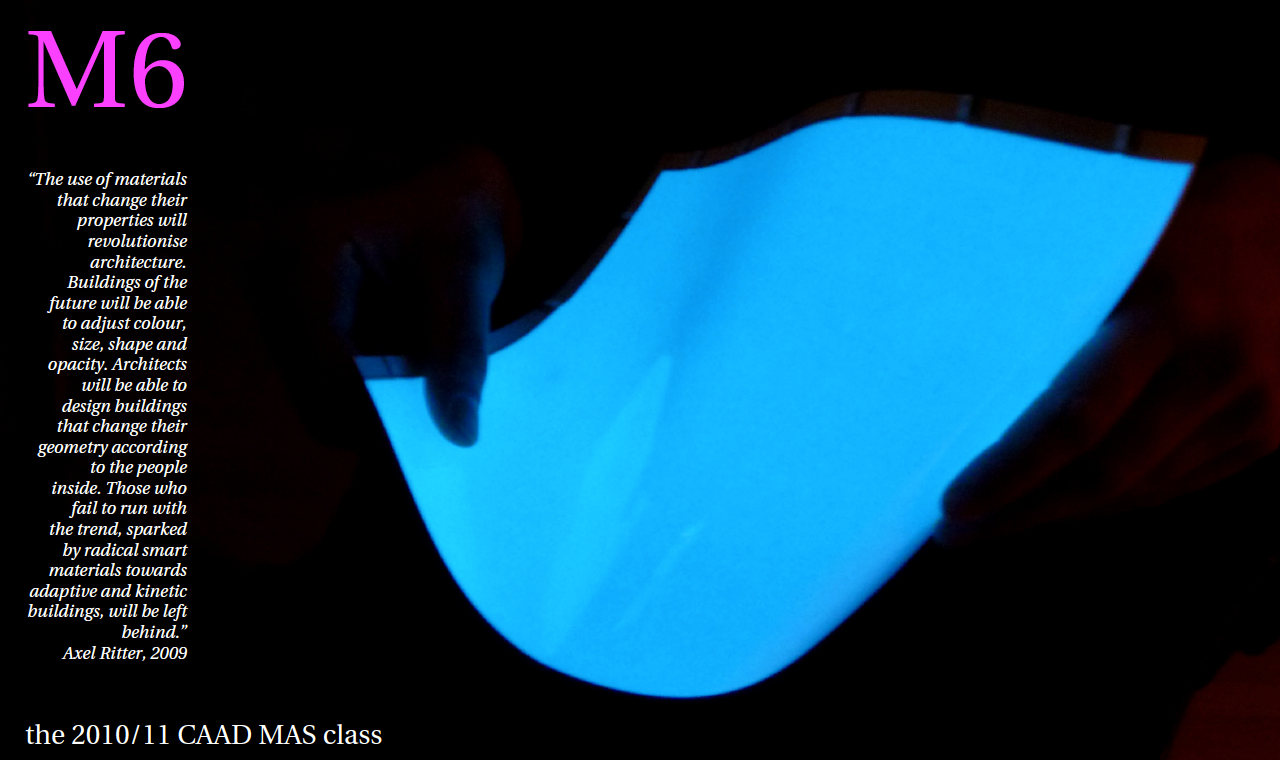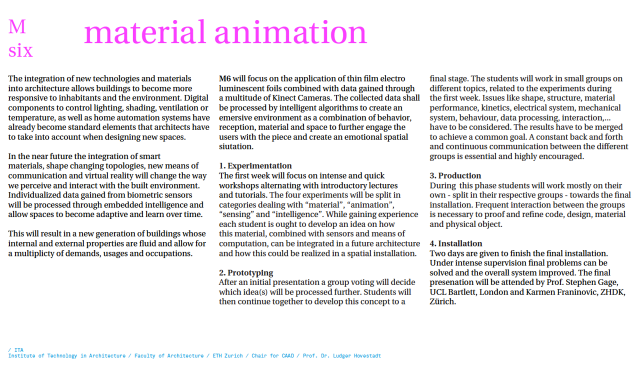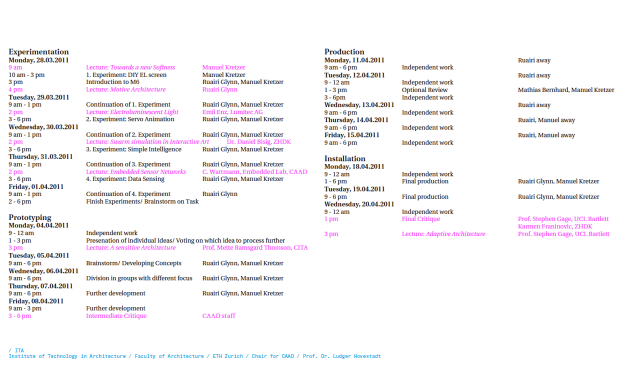M SIX: ADAPT-ABILITY
The integration of new technologies and materials into architecture allows buildings to become more responsive to inhabitants and the environment. Digital components to control lighting, shading, ventilation or temperature, as well as home automation systems have already become standard elements that architects have to take into account when designing new spaces. In the near future the integration of smart materials, shape changing topologies, new means of communication and virtual reality will change the way we perceive and interact with the built environment. Individualized data gained from biometric sensors will be processed through embedded intelligence and allow spaces to become adaptive and learn over time. This will result in a new generation of buildings whose internal and external properties are fluid and allow for a multiplicty of demands, usages and occupations.
M6 will focus on the application of thin film electro luminescent foils combined with data gained through a multitude of Kinect Cameras. The collected data shall be processed by intelligent algorithms to create an emersive environment as a combination of behavior, reception, material and space to further engage the users with the piece and create an emotional spatial siutation.
1. Experimentation
The first week will focus on intense and quick workshops alternating with introductory lectures and tutorials. The four experiments will be split in categories dealing with âmaterialâ, âanimationâ, âsensingâ and âintelligenceâ. While gaining experience each student is ought to develop an idea on how this material, combined with sensors and means of computation, can be integrated in a future architecture and how this could be realized in a spatial installation.
2. Prototyping
After an initial presentation a group voting will decide which idea(s) will be processed further. Students will then continue together to develop this concept to a final stage. The students will work in small groups on different topics, related to the experiments during the first week. Issues like shape, structure, material performance, kinetics, electrical system, mechanical system, behaviour, data processing, interaction,… have to be considered. The results have to be merged to achieve a common goal. A constant back and forth and continuous communication between the different groups is essential and highly encouraged.
3. Production
During this phase students will work mostly on their own – split in their respective groups – towards the final installation. Frequent interaction between the groups is necessary to proof and refine code, design, material and physical object.
4. Installation
Two days are given to finish the final installation. Under intense supervision final problems can be solved and the overall system improved. The final presenation will be attended by Prof. Stephen Gage, UCL Bartlett, London and Karmen Franinovic, ZHDK, Zürich.


